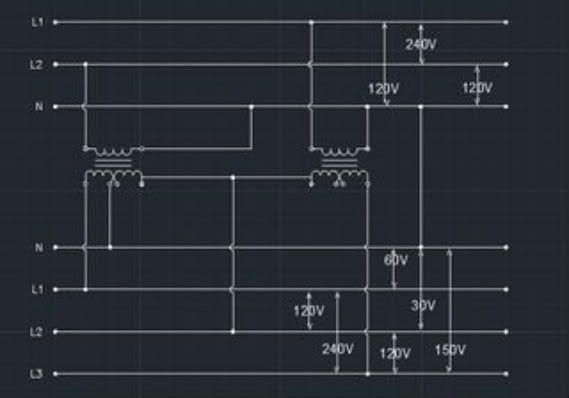mattsilkwood
Senior Member
- Location
- missouri
This is a purely hypothetical question.
If you have a single phase 120/240 system can you take two 240-120/240 transformers and make a three phase system?
I have a drawing that shows this, it is for transmission voltage down to low voltage but logic tells me this will also work on low voltage to low voltage, it just wouldn't be very efficient.
If you have a single phase 120/240 system can you take two 240-120/240 transformers and make a three phase system?
I have a drawing that shows this, it is for transmission voltage down to low voltage but logic tells me this will also work on low voltage to low voltage, it just wouldn't be very efficient.


